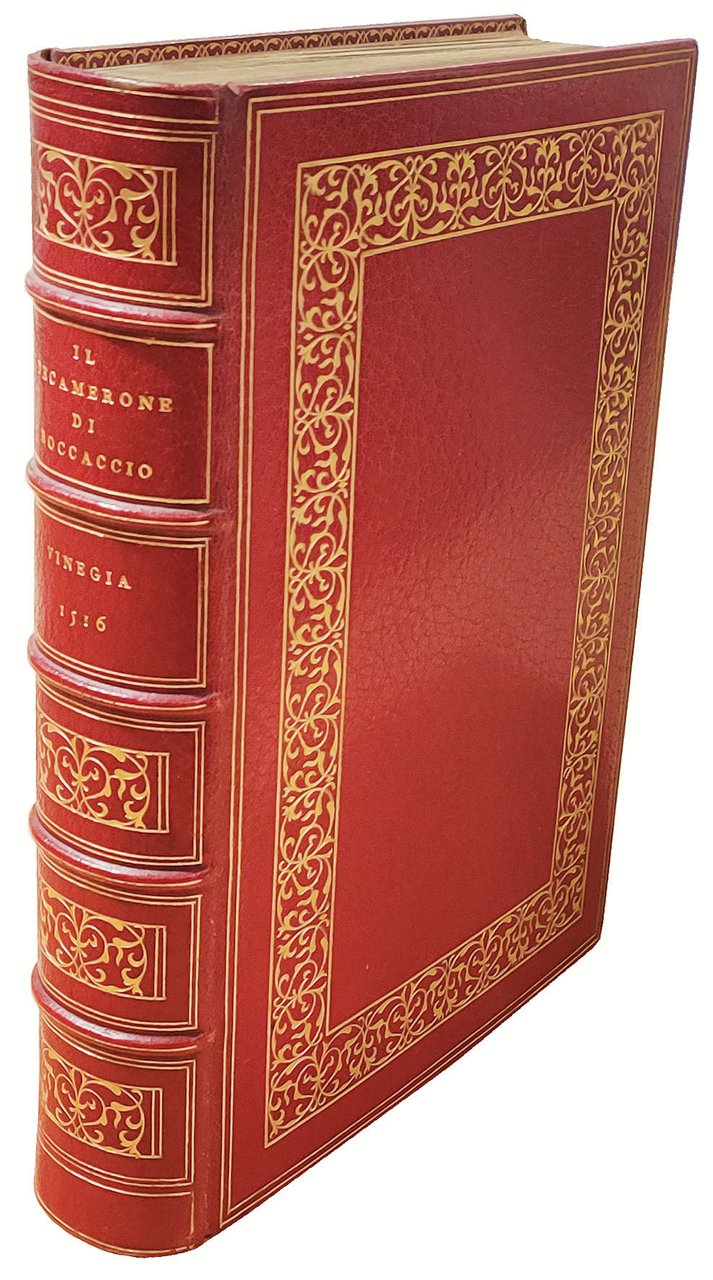
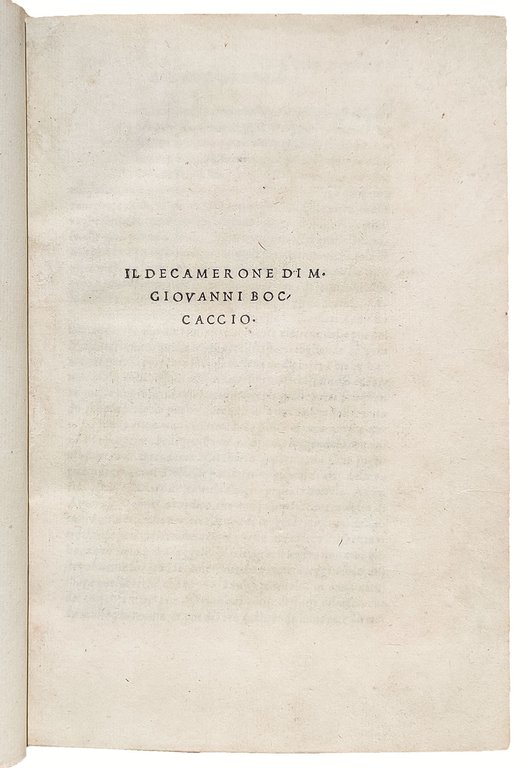
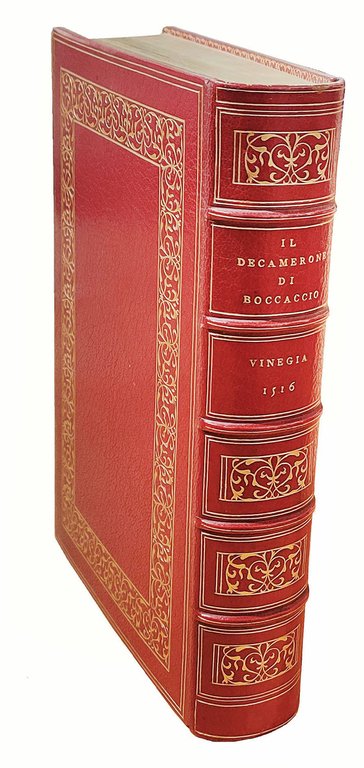
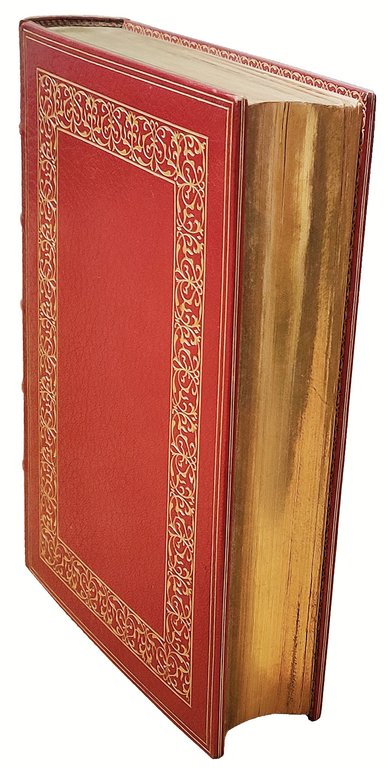
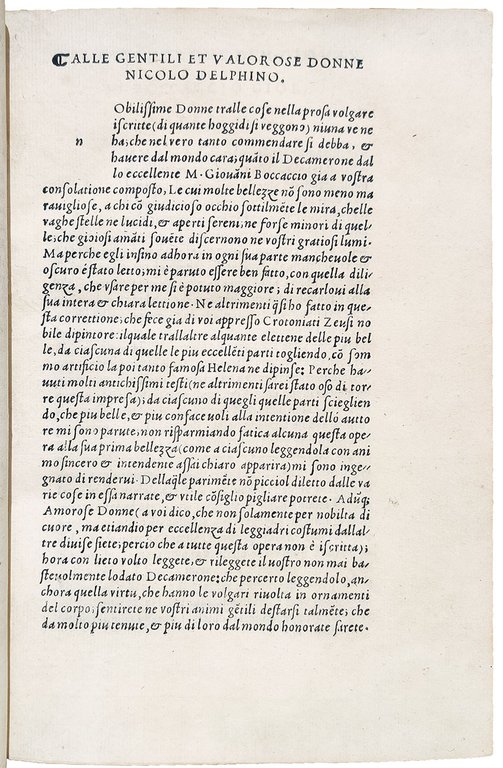
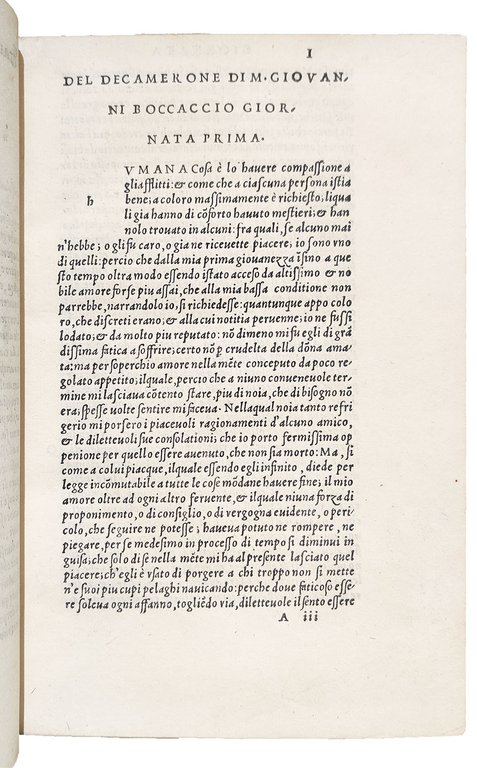
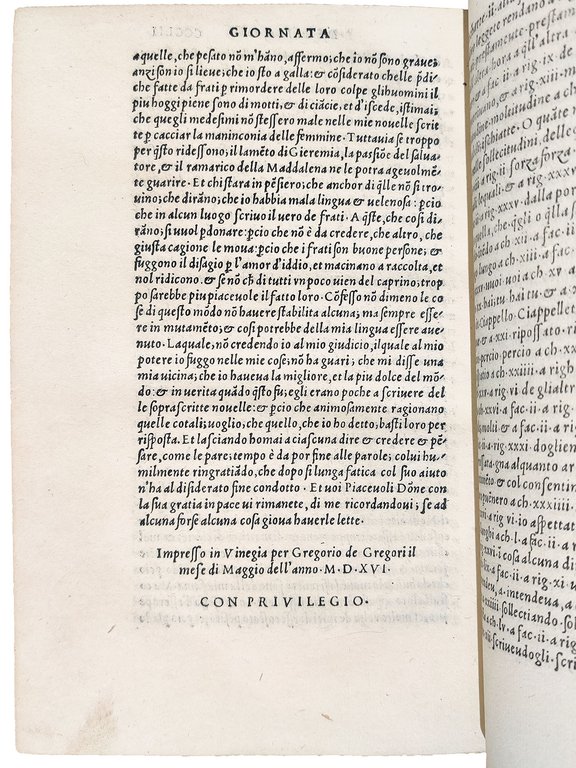

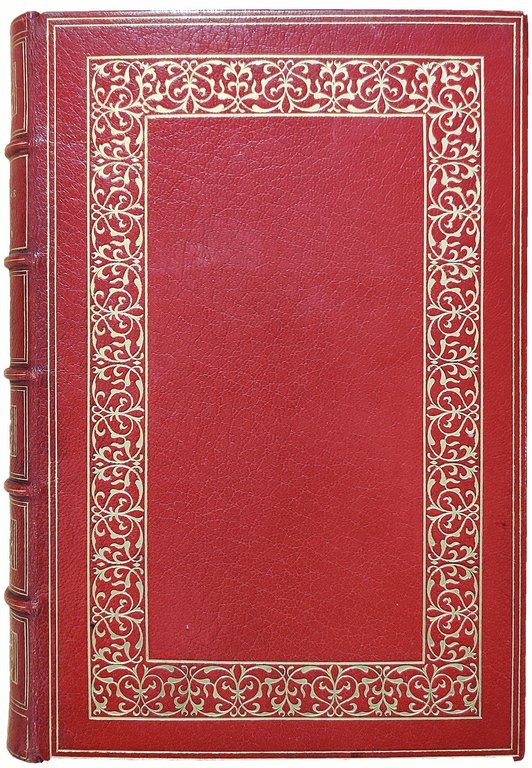
Libri antichi e moderni
BOCCACCIO, Giovanni (1313-1375)-DOLFIN, Nicolò, ed.(c. 1483-1
Il Decamerone di M. Giovanni Boccaccio. Colophon: Impresso in Vinegia per Gregorio de Gregori il mese di Maggio dell'anno M.D.XVI.
Gregorio de Gregori, May 1516
16800,00 €
Govi Libreria Antiquaria
(Modena, Italia)
Le corrette spese di spedizione vengono calcolate una volta inserito l’indirizzo di spedizione durante la creazione dell’ordine. A discrezione del Venditore sono disponibili una o più modalità di consegna: Standard, Express, Economy, Ritiro in negozio.
Condizioni di spedizione della Libreria:
Per prodotti con prezzo superiore a 300€ è possibile richiedere un piano rateale a Maremagnum. È possibile effettuare il pagamento con Carta del Docente, 18App, Pubblica Amministrazione.
I tempi di evasione sono stimati in base ai tempi di spedizione della libreria e di consegna da parte del vettore. In caso di fermo doganale, si potrebbero verificare dei ritardi nella consegna. Gli eventuali oneri doganali sono a carico del destinatario.
Clicca per maggiori informazioniMetodi di Pagamento
- PayPal
- Carta di Credito
- Bonifico Bancario
-
-
Scopri come utilizzare
il tuo bonus Carta del Docente -
Scopri come utilizzare
il tuo bonus 18App
Dettagli
Descrizione
4to (200x135 mm). [2], CCCLII, [10] leaves. Collation: A-X8 AA-XX8 AAA8 BBB12 +8. The last leaf is a blank. Colophon at l. BBB10v. Errata at ll. BBB11-12r. Index at ll. +1-7. Blank spaces for initials with guide-letters. Roman and italic type. Lavishly bound in full red morocco, panel decorated by an elaborate gilt frame within a double gilt fillet, gilt spine with five raised bands, compartments decorated with the same gilt patter as the panels, marbled endleaves, inside gilt dentelles, gilt edges (Hardy-Mennil). A beautiful copy.
First edition of the Decameron edited by Nicolò Dolfin and dedicated by him to the “Gentili et Valorose Donne” (‘Gentle and Valorous Women)'. The Dolfin edition is a landmark in the history of the editing of Boccaccio's work, both for its format (it is the first 4to edition) and for the accuracy of the text, which the editor established with unprecedented philological care.
“After the printing press had been introduced into Italy in the 1460s, it is not surprising that it took over almost entirely the reproduction of a work as long as the Decameron. The text was printed in cities throughout the peninsula. Perhaps appropriately in view of the early manuscript circulation of the work, the first printed edition, known from its colophon as the ‘Deo gratias', was produced in Naples around 1470; but Venice soon became the most influential centre of publication. For nearly half a century, no edition shows evidence of any concern to present an accurate text. But in the sixteenth century, the presentation of the Decameron as a text and as a material book changed direction again. We can identify three major tendencies, linked with each third of the century. The first was a completely fresh approach to the correctness of the text itself, beginning with two editions that appeared within two months of each other in 1516. This new concern reflects the rise in the status of Boccaccio's prose, and especially that of the Decameron, as a model for vernacular usage. It was now being imitated by the leading contemporary authors, notably Pietro Bembo and Iacopo Sannazaro; others who aspired to write elegant prose needed a reliable text to imitate if they were going to keep up to date with the latest trend. The almost simultaneous production of these two editions also reflects the intense rivalry developing between scholars and presses in Venice and Florence in editing Trecento literature. The first of this pair of editions was brought out in Venice in May by the press of Gregorio de Gregori and edited by the patrician Nicolò Delfino (Dolfin), who claimed to have restored the work ‘alla sua intera et chiara lettione', selecting from ‘molti antichissimi testi' those parts that seemed to correspond most closely to the author's intention. Florence responded with a Decameron based on the only previous Florentine edition (1483) with some use of the Florentine manuscript copied by Mannelli. The Venetian edition proved the more influential. Most significantly, a copy of it (now Florence, Biblioteca Nazionale Centrale, 22 A 4 2) was used as the basis for another edition printed in Florence in 1527, prepared by a group of men who corrected Delfino's text with readings derived from manuscripts, including the Mannelli manuscript at a late stage. This assiduously prepared Decameron was, as we shall see, regarded as authoritative for over two centuries” (B. Richardson, Transformations of a text: Boccaccio's Decameron from manuscript to print and beyond, in: “ISLG Bulletin: the Annual Newsletter of the Italian Studies Library Group”, 9, 2010, pp. 10-11).
“Nel maggio usciva a Venezia un'importante edizione del Decameron, stampata da Gregorio de Gregori e curata da un letterato veneziano tutt'altro che oscuro, Niccolò Delfin (o Dolfin). Come il Bembo, il Delfin aveva preferito non esporsi anzi tempo e aveva fatto richiedere il privilegio di stampa al fratello Lorenzo, che dichiarava nel settembre d

